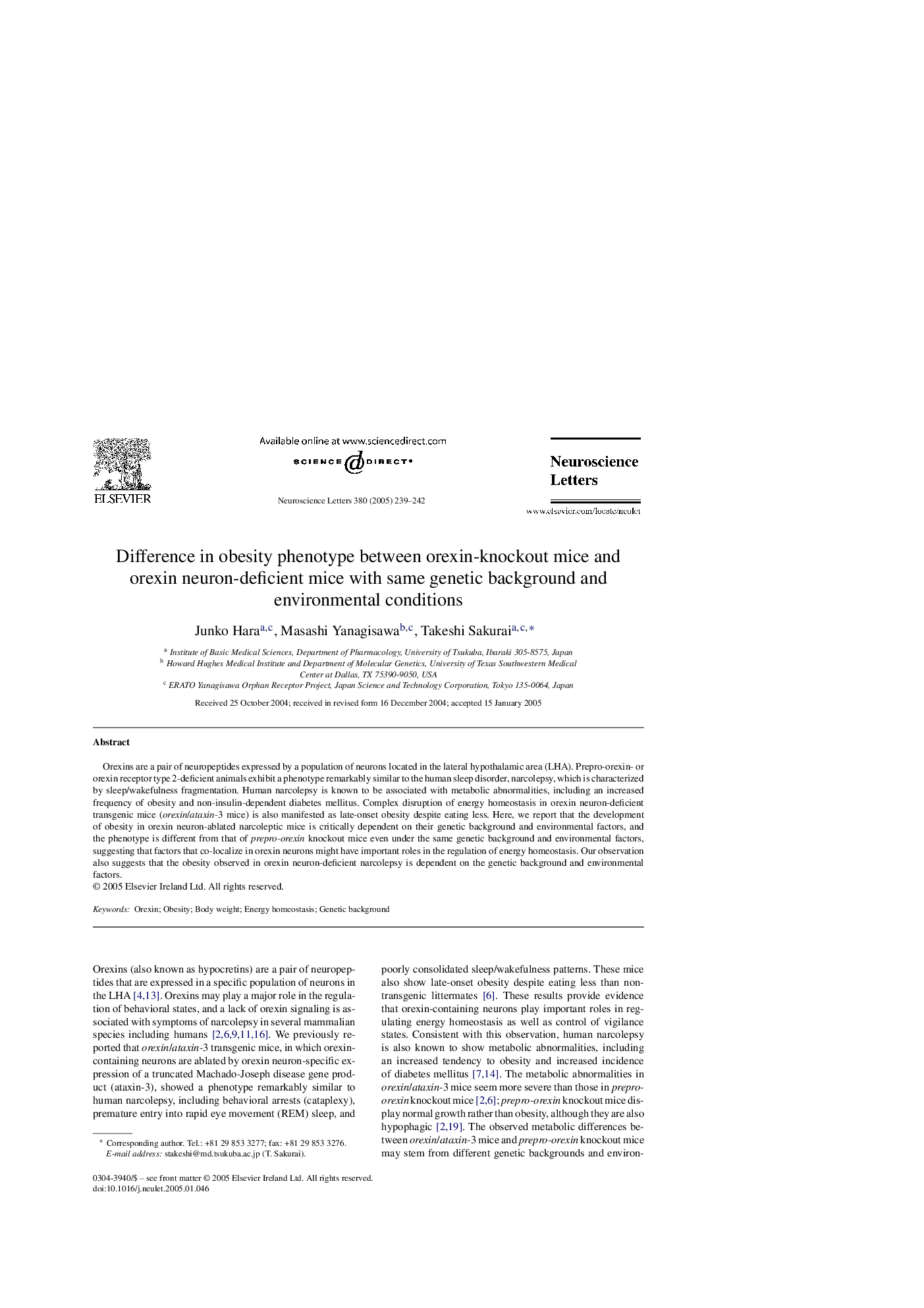| Article ID | Journal | Published Year | Pages | File Type |
|---|---|---|---|---|
| 9429033 | Neuroscience Letters | 2005 | 4 Pages |
Abstract
Orexins are a pair of neuropeptides expressed by a population of neurons located in the lateral hypothalamic area (LHA). Prepro-orexin- or orexin receptor type 2-deficient animals exhibit a phenotype remarkably similar to the human sleep disorder, narcolepsy, which is characterized by sleep/wakefulness fragmentation. Human narcolepsy is known to be associated with metabolic abnormalities, including an increased frequency of obesity and non-insulin-dependent diabetes mellitus. Complex disruption of energy homeostasis in orexin neuron-deficient transgenic mice (orexin/ataxin-3 mice) is also manifested as late-onset obesity despite eating less. Here, we report that the development of obesity in orexin neuron-ablated narcoleptic mice is critically dependent on their genetic background and environmental factors, and the phenotype is different from that of prepro-orexin knockout mice even under the same genetic background and environmental factors, suggesting that factors that co-localize in orexin neurons might have important roles in the regulation of energy homeostasis. Our observation also suggests that the obesity observed in orexin neuron-deficient narcolepsy is dependent on the genetic background and environmental factors.
Related Topics
Life Sciences
Neuroscience
Neuroscience (General)
Authors
Junko Hara, Masashi Yanagisawa, Takeshi Sakurai,
